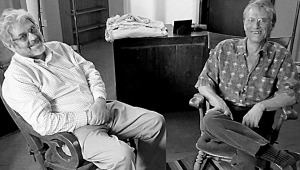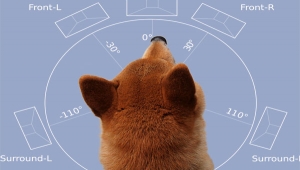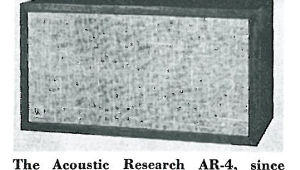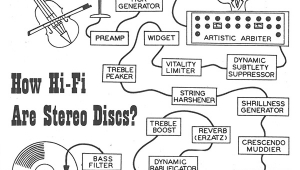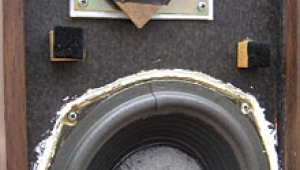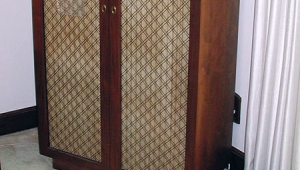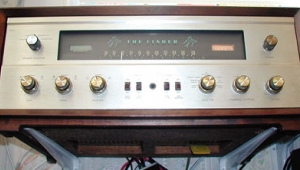| Columns Retired Columns & Blogs |
The Horse's Mouth (Stereo Review's 1983 cable tests)
It's not often that you get a chance to have extensive discussions with the horse's mouth, but we recently had that opportunity. Since July of this year there has been extensive discussion in the audio community, particularly the high-end segment, of Larry Greenhill's article on speaker cable listening tests in the August, 1983 issue of Stereo Review (footnote 1). From recent talks with author Greenhill we've learned that the most interesting story was not in Stereo Review; instead it can be found in the varying reactions from different quarters, and what they say about the high-end industry in general.
Footnote 1: Warning: This hyperlink is to an unauthorized reprint and is included as a reader service. Stereophile does not condone copyright infringement.—Ed.
 The commentaries have been many and varied. About six weeks after the Stereo Review article appeared, we were privileged to receive the preprint of a critique by Peter Moncrieff, of International Audio Review. This critique consumed 14 pages and was unusually circumlocutory, even for Peter. It went to great lengths to pound Stereo Review's point of view into the earth, and along with it a bit of the reader's patience.
The commentaries have been many and varied. About six weeks after the Stereo Review article appeared, we were privileged to receive the preprint of a critique by Peter Moncrieff, of International Audio Review. This critique consumed 14 pages and was unusually circumlocutory, even for Peter. It went to great lengths to pound Stereo Review's point of view into the earth, and along with it a bit of the reader's patience.
Many just criticisms of Greenhill's article (as published in Stereo Review) were made, but that wasn't all. International Audio Review's critique went on to introduce questionable theoretical constructs: a concept known as "the vinegar effect"; an analogy which likened the performance anxieties surely experienced by the listening panel to sexual performance anxieties; a radical proposition with respect to left-brain/right-brain separation as it affects the outcome of psychoacoustic experiments. Unfortunately, in my eyes, the International Audio Review critique's ponderous length and doubtful points obscured what was in fact legitimate criticism of the Stereo Review cable review.
International Audio Review circulated this preprint to a variety of high-end manufacturers and magazines (I got, my copy from a skeptical Larry Klein, no less, formerly technical editor of Stereo Review). The purpose was to alert this community to the danger posed by the variety of misleading analyses, employed in Stereo Review's speaker cable article, to decry Stereo Review's standard position on audible differences (the title of the critique is "Three Strikes and You're Out"), and to suggest a boycott of Stereo Review's advertising pages. Responses were solicited with the: promise of printing them intact in whatever form they came.
To my mind the most remarkable aspect of the International Audio Review story was its consumption of an entire issue of International Audio Review Hotline (footnote 2). I could only but think, "Gee, Peter, why spend so much time demonstrating what everyone's known for time immemorial: Stereo Review is committed to badmouthing high-end audio."
I was surprised when the International Audio Review Hotline eventually came out (three months later than scheduled); a large number of people had actually written to voice dismay at the speaker cable article, to testify as to the audibility of different speaker cables, and to decry the High End's lack of muscle in the marketplace. Apparently the issue was more controversial than I thought.
Then I heard of even more reaction. Hans Fantel of the New York Times wrote a piece pointing to the Stereo Review article as yet more proof that high-end audio people were raving lunatics in 'their insistence that seemingly minor factors can have major effects on the sound. Gregory Sandow of The Absolute Sound wrote a piece for the Wall Street Journal (November 29, 1983) pointing up the differences between The Absolute Sound (and its ilk) and Stereo Review as exemplified by Larry Greenhill's article on speaker cables. In their September issue, The Absolute Sound ran a comment on the Stereo Review article, a few letters in response to it, and a very funny "play," written by William T. Semple, starring Antonio Stradivarius (sic), as well as Julian Hearse, David Ramada Inn, Gordon Sales, and Hairy Person (footnote 3).
By this time Stereophile readers who haven't read Stereo Review's original article should, be running to their shelves, wastebaskets, or libraries to see what could, possibly have been said in Stereo Review to generate all this controversy. And that's just the point: controversy, no matter the source, generates interest and sells magazines. The most interesting comment of all comes from William Livingston, editor of Stereo Review, in a letter circulated to Stereo Review's "comp list" and addressed to "Friends of Stereo Review":
"In the August issue of Stereo Review we published an article by Laurence Greenhill in which he described the results of listening tests. The article turned out to be a somewhat bigger news story than we realized. The letters came from everywhere from Ogden, Utah, to Montevideo, Uruguay...I have never responded to the charge that Stereo Review is an enemy of the high end. Anyone who reads the magazine regularly knows that this charge is unfounded. While such letters may not prove anything conclusive about speaker cables, they prove to me that Stereo Review is a magazine with a very high degree of reader involvement. We are a magazine that makes a difference." (footnote 4)
Not surprisingly from the tone of this letter, Stereo Review's "comp list" is composed mostly of advertisers.
What does Stereophile think of the Stereo Review cable review flap? Well, we're in an unusual position, because we've seen both the article Stereo Review printed and the original article as submitted by Larry Greenhill.
I spent some of my undergraduate years studying the New Testament. Much of New Testament scholarship is devoted to analyzing the different contributions made by the "authors" of the different gospels as they passed along orally the traditions they had received. Believe me, if the evangelists made the changes in their oral traditions that Stereo Review made to Larry Greenhill's article, the New Testament might read like Fear of Flying.
Granted, Stereo Review reported the data just as Larry Greenhil! gathered it—in fact, some of the data actually contradicts the written part of the article. Then, of course, Stereo Review inserted a lot of their editorial opinions about the inaudibility of different components and general scoffing at high-end audio nuts. They really put it to the reader, though, when they made up their own conclusion to Greenhill's article:
"...the results demonstrate that while Monster Cable and 16-gauge lamp cord are both audibly different from and probably superior to 24-gauge wire, 16-gauge is good enough to be indistinguishable from Monster Cable when playing music. An esoteric cable would have to be substantially better than Monster Cable in order to be demonstrably superior on 16-gauge wire. So what do our 50 hours of testing, scoring, comparing, and listening to speaker cables amount to? Only that 16-gauge lamp cord and Monster Cable are indistinguishable from each other with music and seem to be superior to the 24-gauge wire commonly sold or given away as 'speaker cable.' Remember, however, that it was a measurable characteristic—higher resistance per foot—that made 24 gauge sound different from the other cables. If the cable runs were only 6' instead of 30', the overall cable resistances would have been lower and our tests would probably have found no audible differences between the three cables." (footnote 5)
Careful readers of the article as printed will know that this conclusion does not present an accurate description of the data that was gathered. Even more interesting, Stereo Review's editors entirely created that ending. Author Greenhill's original manuscript has none of the offensive language that eventually appeared. Here's how he put it:
Footnote 1: Warning: This hyperlink is to an unauthorized reprint and is included as a reader service. Stereophile does not condone copyright infringement.—Ed.
Footnote 2: This issue (Hotline #27) is available from International Audio Review Berkeley, CA (1983); 408 Mason Road, Vista, CA 92084 (2007). Web: www.iar-80.com.
Footnote 3: For those unfamiliar with the early 1980s audio in-crowd: respectively, Julian Hirsch, Stereo Review's chief equipment reviewer for almost the magazine's entire history; David Ranada, at the time Stereo Review's assistant technical editor and in 2007, a contributing editor to the magazine's successor Sound & Vision; Gordon Sell, at the time Stereo Review's technical editor and in 2007, a well-respected PR consultant; and Harry Pearson, founder and editor of The Absolute Sound.—Ed.
Footnote 4: "A Memo From the Editor" William Livingstone, November 1983.
Footnote 5: Stereo Review, August, 1983, p.51.
- Log in or register to post comments



